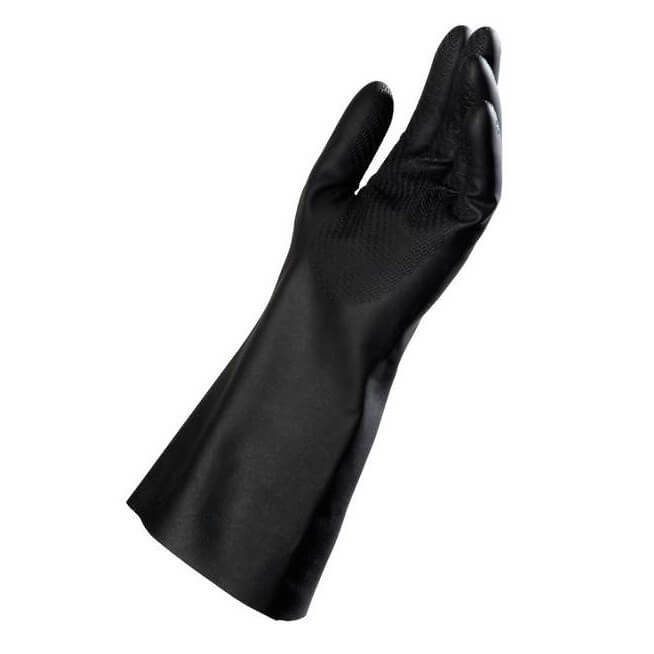In environments demanding rigorous chemical resistance—such as laboratories, nuclear facilities, and industrial settings—butyl synthetic rubber gloves stand out as an irreplaceable safeguard. Engineered for extreme conditions, these gloves combine unmatched durability with specialized chemical defense. This article explores their key features, applications, and selection guidelines, hope this blog will help you find the most suitable required gloves.
Core Advantages: Built for Hazard Mitigation
- Superior Chemical Resistance Butyl rubber’s ultra-low gas permeability provides robust protection against ketones (e.g., acetone), esters (e.g., ethyl acetate), strong acids (nitric acid, hydrofluoric acid), and organic solvents, even in chemical warfare scenarios.
- Enhanced Physical Performance
- Thickness ranges from 0.4–0.8mm, balancing flexibility and tear resistance
- Retains elasticity in sub-zero temperatures, ideal for cryogenic experiments or cold storage operations
- Compliance & Certifications Meets FDA, USDA, and EN374 standards, with select models certified for radiation resistance and food-grade applications
Applications: Versatile Protection Across Industries
- Nuclear & Defense: Safeguards against radioactive materials and chemical weapon decontamination
- Pharmaceuticals & Biotech: Shields against toxic reagents, biohazards, and radioactive isotopes
- Semiconductor & Battery Manufacturing: Anti-static properties protect sensitive electronics in cleanrooms and lithium-ion production
- Chemical Processing: Resists ozone, oil, and corrosive agents during equipment maintenance
Selection Guide: Critical Parameters & Top Brands
- Technical Specifications
- Cuff Diameter: 8–10 inches for compatibility with glove ports
- Interchangeable Design: Models like Honeywell 8B1532A allow left/right-hand versatility
- Material & Manufacturing Opt for solvent-based, multi-dip processes to ensure pinhole-free durability
- Recommended Brands
- Honeywell: 8B series excels in steam resistance and extended sleeve designs
- NORTH: Cost-effective options for varied glovebox sizes
- China Brand Alternatives: Contact us, and we’ll offer customizable solutions

Maintenance & Usage Tips
- Inspection: Regularly check for discoloration, swelling, or surface cracks
- Chemical Avoidance: Limit exposure to aromatic solvents (e.g., benzene) and halogenated hydrocarbons, which degrade material integrity
- Cleaning: Use pH-neutral detergents; air-dry away from direct sunlight
Why Butyl Gloves Dominate Safety Standards
Butyl rubber’s molecular structure—featuring densely packed methyl groups—minimizes gas permeation, outperforming natural rubber by 200x in vapor barrier efficiency. Its halogenated variants (e.g., chlorobutyl) further enhance cross-linking for rapid vulcanization, critical in high-risk operations.








